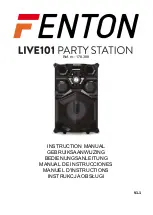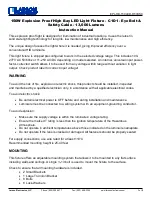
Hydraulic brake
The hydraulic line controls the brake power to
the master brake cylinder. The master brake
cylinder uses brake fluid to forward the pressure
to the wheel cylinders.
The brake inlet pressure must not exceed
130 bar.
The brake system is equipped with a breaking
away coupling.
Connecting
1 When hitching up connect the hydraulic
brake line with the brake line on the tractor.
2 Fasten the breakaway protection cable at
a suitable place on the tractor.
WARNING
The cable may be caught by other machine parts
and thus trigger flat-out braking when cornering.
Danger of traffic accidents!
Fasten the cable in such a way, that it cannot
be caught in any place.
3 Release the parking brake. The cables
must be relieved, and the wheels must be
free to rotate.
1
7
6
5
4
2
3
7
Brake diagram hydraulic brake
1 Hydraulic coupling for brake
2 Manual brake releasing valve
3 Breakaway brake valve
4 Emergency operation (spring cotter)
5 Pressure accumulator
6 Master brake cylinder
7 Wheel cylinder
WARNING
Danger of traffic accidents caused by brake
failure!
During commissioning or after extended idle
times: Fill the pressure accumulator for emer-
gency braking before starting to drive.
Fully kick down the brake pedal on the tractor
for this purpose.
With each actuation of the brake, the pressure
accumulator is pressurized, if required.
Unhitching
1
Park the machine.
2
Apply the parking brake.
3
Place wheel chocks under the wheels.
4
Loosen the brake line.
5 Disconnect the breakaway cable from the
tractor.
6
Unhitch the machine.
Unhitching does not trigger the breakaway
brake. Emergency braking is only triggered if
the spring pin is turned to the front.
Function of the breakaway brake valve
The valve has two positions:
A - operating position
B - emergency braking
A
1
B
Breakaway brake valve
1 Manual brake releasing valve
76
77
















































